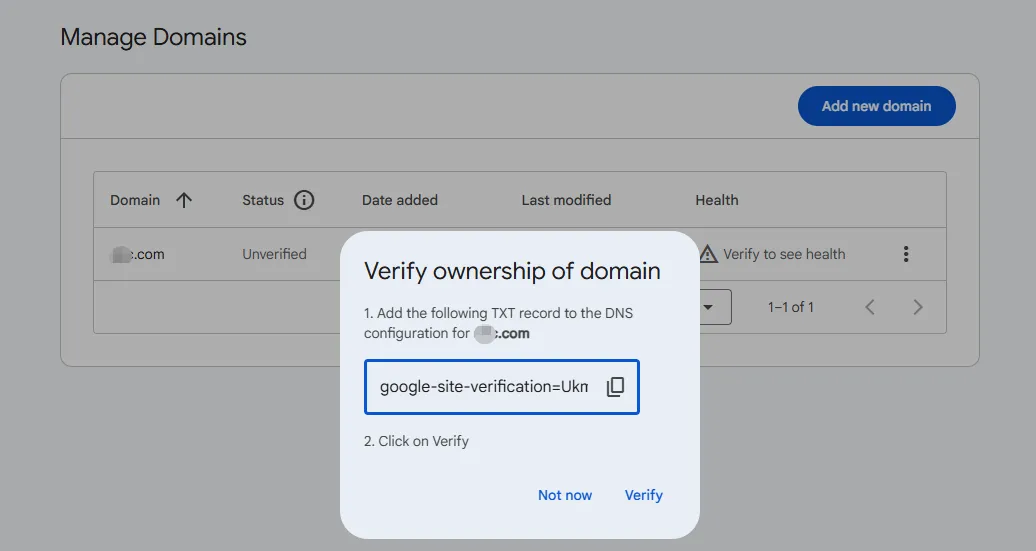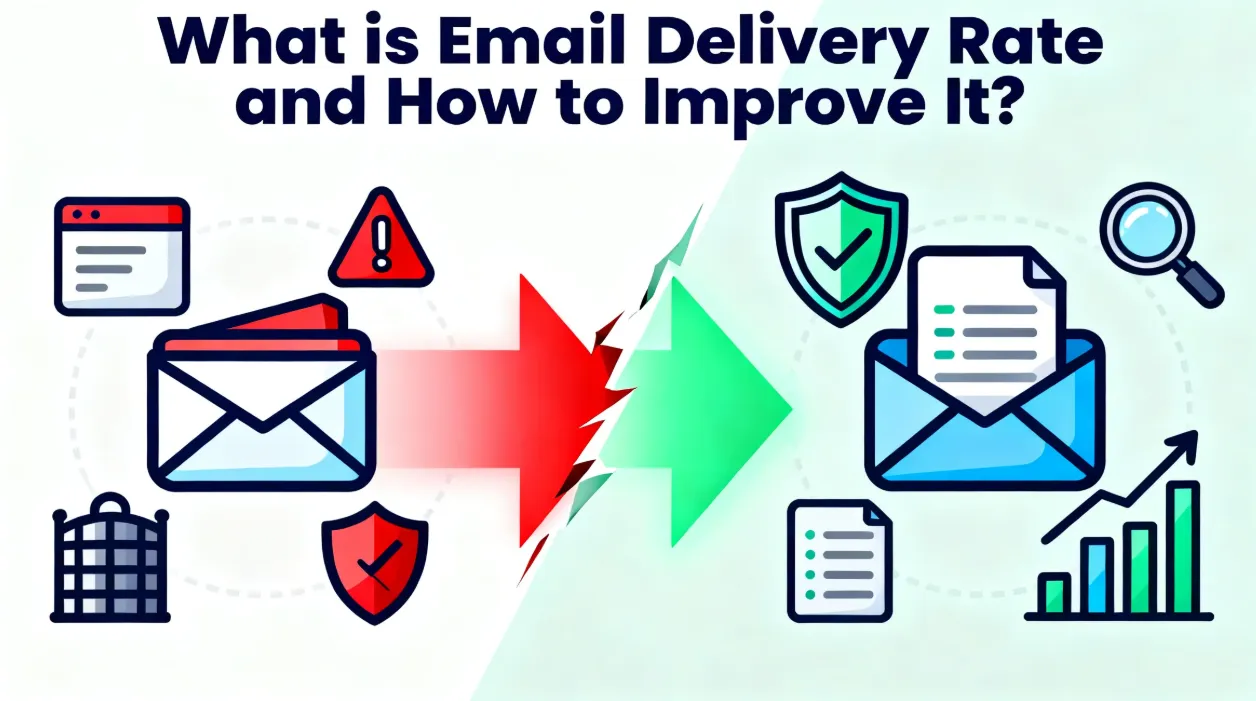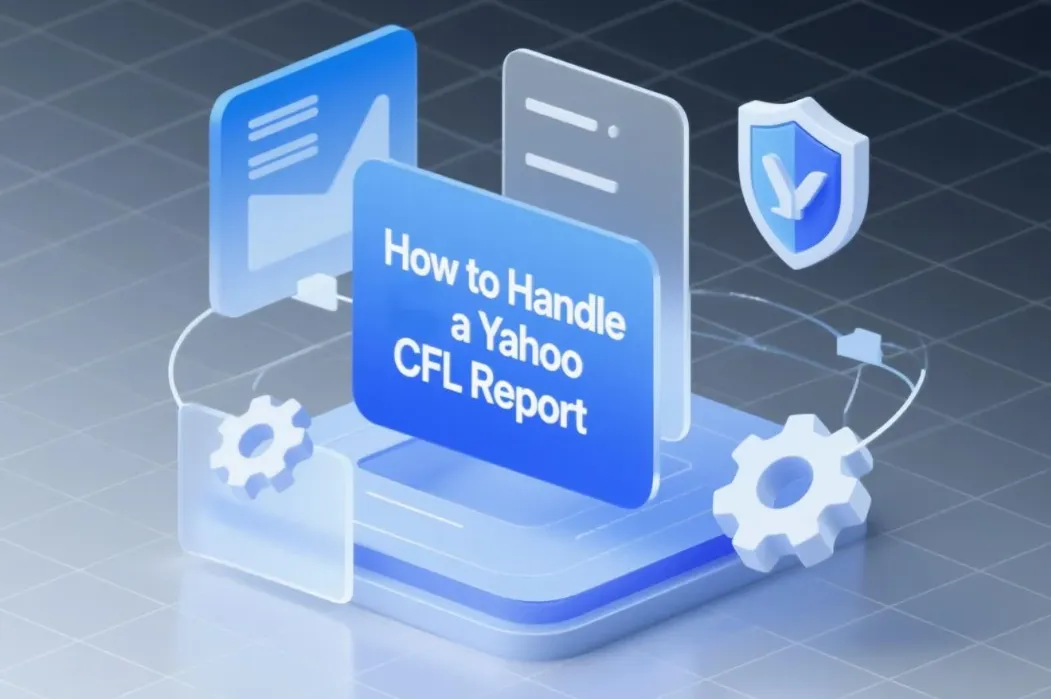For anyone who sends bulk emails through Gmail, maintaining a strong sender reputation is non-negotiable. Google Postmaster Tools (GPT) was created to help marketers, IT teams, and small businesses monitor deliverability, authentication, and spam rates.
With the release of Google Postmaster Tools V2, Google has redesigned how senders track reputation and compliance. This update arrives as Gmail and Yahoo tighten their 2024–2025 sender requirements. Ignoring these new metrics can quickly push your campaigns to the spam folder, even if your content is clean.
This guide breaks down the latest Postmaster V2 changes, compares them with V1, and shows how you can use the new features to improve deliverability, maintain compliance, and build a trusted email presence.
The Key Updates in Google Postmaster Tools V2 – What Has Changed?
Version 2 introduces significant changes beyond a visual refresh, marking a shift towards compliance-driven data and streamlined dashboards.
1. Removal of Domain and IP Reputation Dashboards in V2
In earlier versions of Google Postmaster Tools, senders could view Domain Reputation and IP Reputation through dedicated dashboards. However, in Google Postmaster Tools V2, these dashboards have been completely removed, not integrated or merged.
Google no longer provides these reputation metrics in any form. Their full removal reflects Google’s shift toward a compliance-driven evaluation model where reputation is no longer manually monitored through separate dashboards. Instead, V2 focuses on authentication alignment, spam rate thresholds, policy compliance, and sender behavior, which together determine inbox placement.
This redesign indicates Google’s move away from traditional reputation scoring and toward automated enforcement based on bulk-sender compliance requirements.
2. Compliance Status Dashboard
The most substantial enhancement in V2 is the new Compliance Status Dashboard, enabling bulk senders to monitor Gmail compliance in real time. Key functionalities include:
-
Bulk sender compliance checks across multiple domains.
-
Color-coded reputation indicators (green = compliant, orange = warning, red = non-compliant).
-
Real-time monitoring of DMARC, SPF, and DKIM authentication health.
-
Primary domain assessments , providing a comprehensive summary of your sender ecosystem.

This dashboard facilitates the early detection of configuration errors before they impact inbox placement.
3. Enhanced Spam Rate Dashboard
Spam reporting data has been refined to exclusively track user-reported spam, leading to increased precision.
This dashboard now includes trend visualization and clear compliance thresholds, allowing for the proactive identification of spikes that could negatively affect sender reputation.
Such improvements are vital for maintaining email deliverability and ensuring adherence to best practices.
4. Feedback Loop Improvements
The Feedback Loop now offers more granular identifiers for each incident, assisting senders in troubleshooting Gmail-specific complaints. These insights enable proactive issue management rather than reactive corrections.
Collectively, these updates render Postmaster V2 a significantly more compliance-oriented, data-accurate, and user-friendly platform than its predecessor.
How Does Google Postmaster Tools V2 Help Prevent Spam Folder Placement?
A sender’s placement in Gmail’s inbox versus the spam folder is largely determined by historical reputation, authentication strength, and user engagement metrics.
According to Google’s internal deliverability research and Return Path’s 2024 Email Benchmark Study, over 70% of spam folder placements are triggered by declining sender reputation rather than the message content itself.
Google Postmaster Tools V2 addresses this directly by combining reputation, compliance, and spam data into a unified dashboard. This allows senders to identify and correct deliverability issues before they escalate.
By monitoring the Compliance Status and Spam Rate dashboards, marketers can quickly detect when Gmail users start flagging messages as spam or when domain alignment weakens. As a result, proactive maintenance of authentication and engagement quality significantly reduces the likelihood of Gmail rerouting campaigns to the spam folder.
V1 vs V2: Major Differences and What They Mean for You
| Feature | V1 (Legacy) | V2 (Current) |
|---|---|---|
| Domain Reputation / IP Reputation | Separate dashboards for domain & IP scores | Removed – merged into Compliance Status Dashboard |
| Spam Rate | Spam Rate based on limited filters | User-Reported Spam Rate with real-time accuracy |
| Data Availability | 7–14 day lag in data refresh | Near real-time data updates |
| Feedback Loop | Limited Gmail recipient visibility | Expanded identifiers and Gmail-only metrics |
| Visual Interface | Simple line graphs and charts | Color-coded tiles and trend visuals |
| Troubleshooting | Requires manual comparison of metrics | Simplified one-screen view for quick diagnostics |
In short, V2 eliminates redundant graphs and replaces them with actionable compliance tracking, allowing marketers to diagnose problems faster and ensure that Gmail’s stricter rules are always met.
How to Get Started with Google Postmaster Tools V2 – Setup Guide
The upgraded platform offers a quick and straightforward setup. Follow these five steps to verify your domain and gain full access to Gmail deliverability data.
Step 1: Access the Google Postmaster Tools Portal
Navigate your web browser to the official Google Postmaster Tools portal at postmaster.google.com.
To proceed, sign in using either a standard Gmail account or your dedicated Google Workspace account. This authentication step links your access to the domain data you intend to monitor.
Step 2: Confirm Domain Ownership
Next, formally add your domain within the Postmaster Tools interface. Upon addition, Google will provide specific instructions for ownership verification.
This typically involves adding a unique DNS TXT record, generated by Google, to your domain's DNS settings.

This critical verification step ensures that only legitimate, verified senders and authorized individuals can access and monitor sensitive email performance data associated with the domain, thereby safeguarding against unauthorized access.
Step 3: Review the Compliance Status Dashboard
Following successful domain verification, you will gain access to the newly designed Compliance Status Dashboard. This central interface provides an immediate visual overview of your domain's health.
Observe the color-coded status for each listed domain – a prominent green indicator signifies that your domain currently meets Gmail’s stringent bulk sender requirements, an important indication of strong deliverability.
Step 4: Monitor Spam Rate and Authentication Reports
Proceed to the dedicated Spam Rate Dashboard to gain deeper insights into how Gmail recipients interact with your emails. This section allows for the review of the reported spam rate, a critical metric.
A consistently rising spam rate serves as an important early warning signal, indicating potential issues requiring immediate attention. These may include ineffective subject lines, excessive sending frequency, or a need to improve recipient list hygiene.
Step 5: Troubleshoot and Optimize Performance Continuously
Utilize the Feedback Loop feature within Postmaster Tools to identify and diagnose any recurring delivery issues or problems with recipient engagement.
Combine these invaluable insights with analytics data from your own email sending platform, such as the real-time tracking offered by Aurora SendCloud.
By integrating these disparate data points, you can continuously refine your email sending practices and optimize overall deliverability performance.
Recommendation : Schedule a recurring calendar reminder to review these metrics weekly – consistent monitoring is essential to prevent sudden drops in deliverability.
Why Is Sender Reputation More Important Than Ever in 2025?
Sender reputation now functions as the digital equivalent of a credit score for email marketing. As Gmail, Yahoo, and other providers adopt stricter sender authentication frameworks in 2025, maintaining a strong reputation is no longer optional—it’s mandatory for deliverability.
Studies from Validity and Google indicate that senders with a “High” domain reputation enjoy 98% inbox delivery, while “Low” reputation senders average less than 40%. Google Postmaster Tools V2 continuously analyzes engagement data, complaint rates, and authentication health to assign compliance-based reputation tiers.
Regularly monitoring these insights allows marketers to anticipate reputation dips, adjust list hygiene practices, and avoid blacklisting. In essence, reputation is the core metric that determines whether your campaigns reach real customers or vanish into spam filters.
Common Beginner Mistakes to Avoid with Postmaster Tools
Even the best of us can sometimes mess up email authentication or miss important details. Let's make sure you avoid these common blunders:
-
Forgetting Domain Verification: If you don't verify your domain, you won't get any data – and Gmail won't know it's really you sending emails.
-
Mismatched DNS Setup: Even a tiny typo in your SPF or DKIM records can mess up your authentication. Always double-check those!
-
Overlooking Spam Rate Trends: See a small bump in spam reports? That's usually Gmail's gentle warning before they start slowing down your emails.
-
Skipping DMARC Alignment: Postmaster V2 loves DMARC-aligned sending. If yours isn't aligned, your domain could quickly get flagged as risky.
Catching these issues early means your emails will happily land in inboxes instead of getting caught in spam filters.
How Can You Combine Postmaster V2 Data with Other Email Platforms for Better Insights?
Integrating Postmaster V2 with advanced email platforms creates a holistic view of sender health and campaign performance.
When paired with analytics tools such as Aurora SendCloud , SendGrid, or Amazon SES dashboards, marketers gain a cross-channel understanding of how Gmail-specific issues correlate with engagement metrics like open rates, bounce rates, and spam complaints. For instance, Aurora SendCloud’s AI-optimized routing system uses Postmaster data to dynamically adjust delivery behavior based on Gmail’s real-time feedback.
A recent Litmus and HubSpot joint study found that organizations using cross-platform deliverability monitoring increased inbox rates by 26% within six months. By combining Postmaster V2 insights with your ESP’s analytics, you can quickly identify reputation threats, improve content performance, and establish long-term sender trust across global audiences.
About Aurora SendCloud: Ensuring Top-Tier Email Delivery
Aurora SendCloud is a B2B SaaS email delivery platform built for marketers and developers who demand reliability, compliance, and scale.
With the growing complexity of Gmail’s bulk sender policies, Aurora SendCloud helps businesses stay compliant through:
-
AI-optimized email delivery that adapts to Gmail and Yahoo algorithms.
-
Built-in Postmaster V2 integration for seamless monitoring.
-
Real-time analytics on sender reputation, spam rate, and delivery status.
-
Dedicated support for domain authentication (SPF, DKIM, DMARC).
By combining Gmail’s compliance insights with Aurora SendCloud’s smart routing and analytics, businesses can ensure faster inbox placement and stronger sender trust across global audiences.
FAQs
How does Google Postmaster Tools V2 help improve email deliverability?
Google Postmaster Tools V2 helps email senders monitor and strengthen deliverability by tracking IP and domain reputation, delivery errors, and emails marked as spam. The platform provides actionable insights that help ensure legitimate emails reach users’ inboxes and aren’t automatically filtered by mailbox providers.
What kind of data can I access in the new Postmaster dashboard?
The updated Google Postmaster Tools dashboard provides detailed metrics on email traffic, low spam rate, email rejection, and authentication success. You can also view compliance breakdowns for SPF, DKIM, and DMARC, ensuring your outbound emails meet best-practice security and compliance standards.
How do I set up and verify my domain?
To get started, add a TXT or CNAME record to your sender domain or root domain and click Verify. Once confirmed, you’ll gain access to the compliance dashboard, authentication dashboard, and encryption dashboard for tracking your sending performance.
What best practices maximize the benefits of Postmaster Tools?
Regularly checking your Postmaster Tools data helps maintain compliance and identify issues early. Keep your sending domain authenticated, manage email volume, use relevant content, and avoid sudden spikes in outbound emails. Consistent monitoring prevents misinterpreting data and supports reliable, long-term inbox placement.
Conclusion: Adopt Postmaster Tools V2 to Protect Your Sender Reputation
In 2025, deliverability success depends on more than content quality — it hinges on transparency, authentication, and sender reputation.
Google Postmaster Tools V2 gives email marketers the clarity they need to maintain compliance with Gmail’s latest policies. By using its real-time dashboards and aligning with trusted delivery platforms like Aurora SendCloud , you can prevent deliverability issues before they occur, safeguard your brand reputation, and ensure every campaign reaches the inbox.
Make it part of your weekly workflow: monitor, adjust, and improve. Every sender who uses V2 proactively will stay far ahead in Gmail’s evolving email ecosystem.






